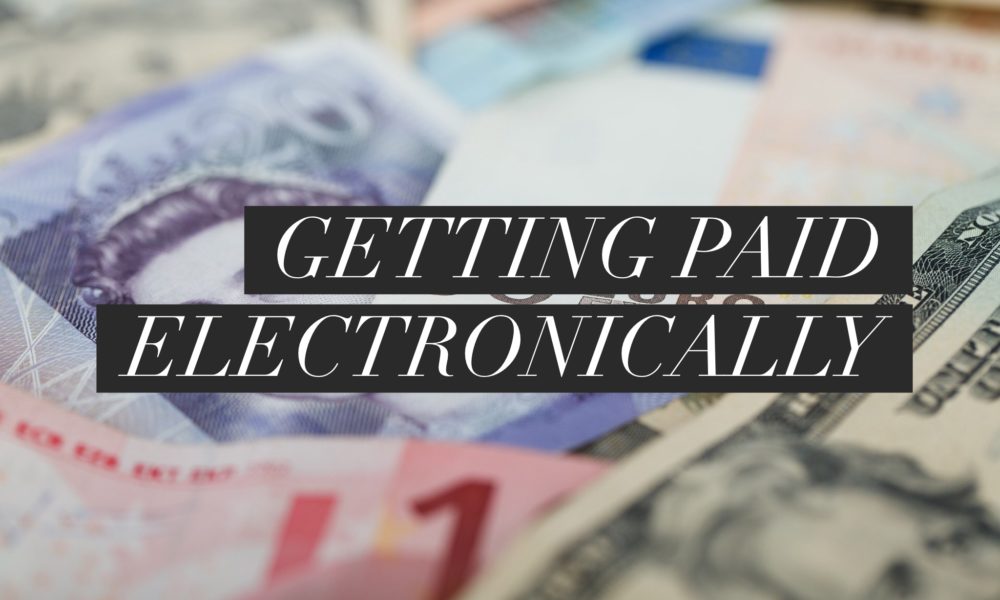Modern Journalist Toolkit 2: Getting paid electronically

It continually surprises me that in the United States, one of the most technologically advanced countries, it’s still a widespread practice to send paper checks to freelance writers. This is true even at companies that have been paying staff via direct deposit for a decade. In most other countries, electronic funds transfers are secure and ubiquitous.
In the past eight years that I’ve been living in South Africa, the majority of my freelance clients have been based in the United States. I have managed to receive electronic payment from all of my US clients during these years (and, it probably goes without saying, from those in Africa, Europe, Asia, and Australia). Sometimes it’s the publisher’s norm, and other times it’s been something I had to push for.
Receiving funds electronically has its pros and cons. Often you trade time and security for a fee. Waiting for a paper check means more time for processing, delivery (not a guarantee in some places), and then a trip to the bank to deposit (although banks now offer remote scan-and-deposit apps), and, of course, time waiting for the money to clear.
Compare that to invoicing and having the money available on the same day, which I have had happen on numerous occasions.
In a place like South Africa, where regular mail delivery is not 100% reliable, and slow even when things do arrive, the tradeoff in bank fees from an overseas client is unquestionably worth it.
Even if you’re in the United States, you may find that it suits your cash flow to push for electronic payment from your clients.
Like most everything else when it comes to payment terms, it’s something that can be negotiated.
Depending on your agreement, you as the recipient may wind up paying some or all of the fees involved. In particular, international wires can have flat fees that are quite high for relatively small jobs—and some companies feel that bank fees on both the sending and receiving end are your responsibility. It’s definitely worth clarifying ahead of time.
Regardless of where you’re based, if you’re interested in getting ahold of your money sooner rather than later, here’s what’s worked for me.
1-Bring up the issue of electronic payment after agreeing on the work, but before signing the contract.
It’s always easiest to negotiate when the client wants to work with you. The default position of many US clients is that they don’t pay freelancers electronically; the editorial team may have to ask accounts payable to make an exception.
One of my US clients at first said that they could only pay freelancers electronically, and since it was an ongoing contract, I agreed to it. They sent paper checks to a trusted person in the US who deposited them for me. After a few months, I asked if the client if they would reconsider, and they did—because they did not want to lose me.
2-Let them know the reason why you’re asking for electronic payment.
If you’re in a location where the local mail is slow and/or unreliable, by all means mention it.
But simply stating that you’re in a foreign country, or even that you prefer electronic banking if at all possible, may help. Keep it brief.
3-Suggest a few different options for receiving payment and/or be open to other methods.
I’ve used these methods with success, and there are numerous others that may work well for you too:
• Overseas bank account
• Domestic bank account
• PayPal
The inconvenience of the paper check isn’t going away any time soon in the US, even though it’s obsolete in many other places. If you’ve never asked if they can pay you electronically, what have you go to lose?
If you found this useful, you may also be keen for the special bonus module, “Writing for Overseas Clients,” which is part of Freelance Writer Bootcamp. Registration closes this Wednesday, May 25.
 Download a free copy of “5 Proven Steps to Writing Queries that Sell.” I hate spam and will never share your info.
Download a free copy of “5 Proven Steps to Writing Queries that Sell.” I hate spam and will never share your info.